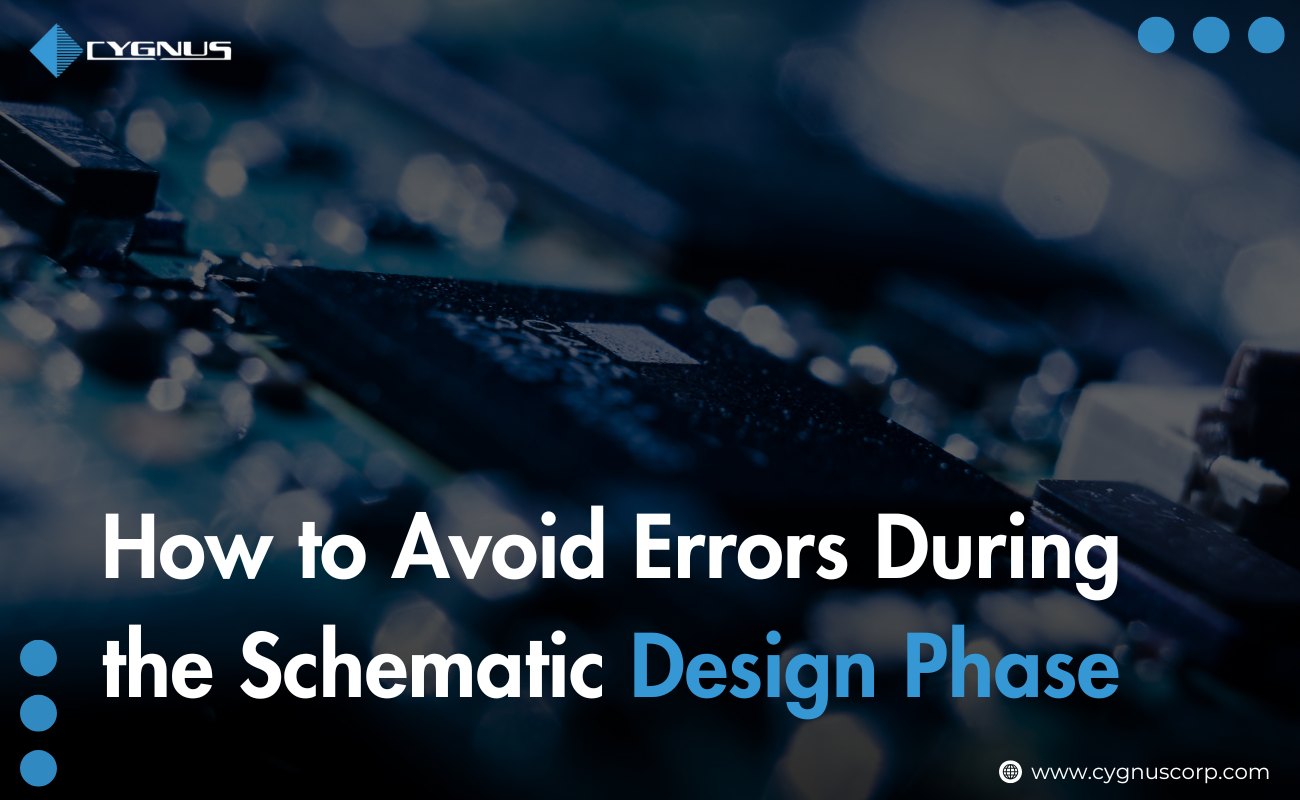Choosing the right path in PCB design begins with a solid schematic. The schematic design phase isn’t just the first step—it’s the foundation for your entire PCB design workflow. If you get it right, you save time, money, and frustration down the road. If you get it wrong, expect endless headaches, delays, and costly rework. In this guide, you’ll learn how to avoid errors during the schematic design phase by following proven best practices and using essential tools.
What is the Schematic Design Phase?
The schematic design phase is where your electronic ideas first become a reality. This is when you convert your project requirements and system architecture into a logical diagram that details every electronic connection, component, and interaction in your PCB. Think of it as the blueprint for your circuit board—the roadmap that guides the rest of your PCB design workflow.
Key goals and deliverables of this phase:
- Capture the complete logical circuit, including all components and their relationships.
- Ensure every function of your design is represented accurately.
- Create a schematic diagram that is easy to interpret for both design and manufacturing teams.
- Document important notes and signal flows for reference in later stages.
Getting the schematic right at this stage is critical. Any errors, omissions, or unclear symbols can lead to manufacturing failures or functional issues in the finished PCB.
Common Schematic Design Errors to Watch Out For:
Even seasoned engineers sometimes make mistakes during the schematic design phase. Understanding the most common pitfalls is the first step toward building a flawless PCB.
- Incorrect component connections: Accidentally wiring the wrong pins or missing connections can break the functionality of the circuit.
- Missing or duplicate reference designators: Every part needs a unique ID. Duplicates or missing labels lead to confusion and errors during assembly.
- Symbol-to-footprint mismatches: If the symbol in your schematic doesn’t match the actual footprint, your PCB won’t be manufacturable.
- Net label inconsistencies: Net labels (signal names) must be consistent throughout. Typos or mismatches lead to unintended signal connections or open circuits.
- Unconnected pins and floating nets: Sometimes pins are left floating (unconnected), leading to undefined behavior or noise problems.
- Power and ground issues: Omitting power or ground connections, or connecting them incorrectly, can cause the whole board to fail.
Knowing these schematic design errors upfront helps you avoid them and sets you on the path to success.
Best Practices to Avoid Schematic Design Errors:
1. Use a Consistent Naming Convention:
Clear, logical naming is one of the simplest yet most powerful ways to reduce confusion. Every net, signal, and reference designator should follow a consistent pattern. This makes it much easier for you—and anyone else reviewing your design—to understand what’s going on at a glance.
Tip: Define your naming scheme before you start, and stick to it throughout the project.
2. Leverage Built-in Design Rule Checks (DRC):
Most modern schematic capture tools (like Altium Designer, Eagle, KiCad, and OrCAD) include real-time Design Rule Checking. This feature will alert you to obvious mistakes as you draw, such as short circuits, unconnected nets, or duplicate reference designators. Always turn DRC on and resolve any flagged issues before moving forward.
3. Verify Component Libraries:
Good component library management is at the heart of reliable schematic design. Use only verified and up-to-date symbols and footprints. An outdated or incorrect library can introduce hidden schematic design errors that are tough to spot until manufacturing or assembly.
Tip: Regularly audit your component libraries and ensure they’re centrally managed if you’re working in a team.
4. Cross-Check Nets and Connections:
Learning how to check schematic for errors is essential. After automatic checks, take the time for a manual review:
- Walk through each signal path and verify connections.
- Make sure power and ground nets are complete and correct.
- Use netlist comparison tools to catch inconsistencies.
5. Double-Check Reference Designators:
Reference designators (R1, U2, C5, etc.) must be unique and correctly assigned. This is crucial for both assembly and troubleshooting later. Use your CAD tool’s auto-annotation feature, but always review it manually for clarity and correctness.
6. Simulate Critical Circuits:
Run simulations on key parts of your circuit—especially analog or high-speed digital sections—to catch potential functional errors before PCB layout begins. Simulation won’t catch every issue, but it helps spot major problems early.
7. Peer Reviews and Team Collaboration:
Never underestimate the value of a fresh set of eyes. Schedule regular schematic reviews with team members or peers. An experienced engineer can quickly spot mistakes that are easy to overlook after hours of solo work. Establishing a solid schematic review checklist helps ensure every design gets a thorough second look.
Essential Tools and Techniques for Error Prevention:
Choosing the right tools can make your job much easier and more accurate. Here are some essentials for every designer:
- Recommended schematic capture tools: Altium Designer, Autodesk Eagle, KiCad, OrCAD—each offers robust error checking and user-friendly interfaces.
- Version control and revision tracking: Always track schematic revisions. Tools like Git or SVN allow you to manage changes and roll back if errors are discovered.
- Automated error reporting: Set up your tool’s error and warning reporting. Review these reports as part of your routine, not just before handoff.
Strong component library management also ensures your entire team is always working with the latest, error-free symbols and footprints.
Creating a Schematic Design Checklist:
Before you move from schematic to layout, run through this schematic review checklist:
- All connections verified: No unconnected pins, broken nets, or floating nodes.
- Component values checked: Ensure every resistor, capacitor, and IC is correct and documented.
- Simulation run: Run simulations on sensitive or critical sections where possible.
- Netlist cross-verified: Compare schematic netlist with expected connections.
- Documentation and notes included: Add helpful notes for layout, assembly, and testing teams.
A well-maintained checklist helps you catch what automated tools might miss and is a hallmark of PCB schematic best practices.
The Impact of Avoiding Schematic Errors on PCB Success:
Getting the schematic right pays off at every stage of the PCB design workflow:
- Reduced rework and prototyping costs: Fewer errors mean fewer board spins, which saves both time and money.
- Faster time-to-market: The project moves forward smoothly when you avoid design bottlenecks and manufacturing delays.
- Improved PCB reliability and performance: A clean, error-free schematic sets the stage for a functional, robust product with fewer field failures.
Conclusion:
The schematic design phase is one of the most critical steps in any electronics project. Avoiding common mistakes and following proven PCB schematic best practices ensures your board will function as intended and move smoothly from design to production. Use the tips, tools, and schematic review checklist in this guide to boost your confidence and your results. The time you spend now double-checking your schematic will save you hours—maybe even days or weeks later.
FAQs
Q1: What are the most common schematic design mistakes in PCB projects?
A: Some of the most common mistakes include incorrect component connections, missing or duplicate reference designators, symbol-to-footprint mismatches, inconsistent net labels, and unconnected or floating nets.
Q2: How can I automate error checking in my schematic designs?
A: Use your CAD tool’s Design Rule Check (DRC) feature, set up automated netlist verification, and regularly review error and warning reports to catch schematic design errors as early as possible.
Q3: Why are reference designators important in schematic design?
A: Reference designators uniquely identify each component. They are vital for assembly, troubleshooting, and ensuring that the PCB matches the schematic exactly.
Q4: What tools are best for preventing schematic design errors?
A: Popular options include Altium Designer, Autodesk Eagle, KiCad, and OrCAD. These tools offer built-in error checks, version control, simulation, and powerful component library management features.




